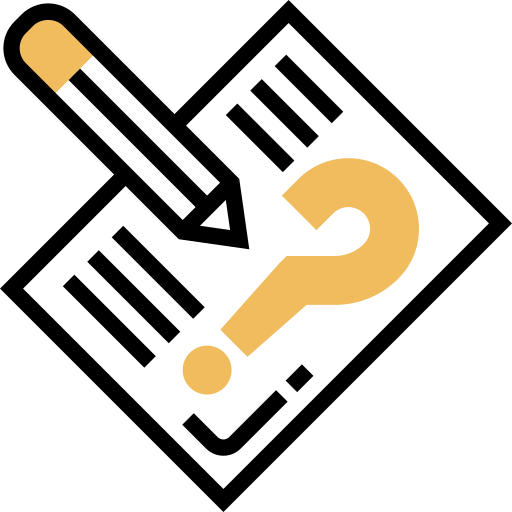CBSE 12th Standard Maths Subject Application of Integrals Case Study Questions 2021
By QB365
QB365 Provides the updated CASE Study Questions for Class 12 Maths, and also provide the detail solution for each and every case study questions . Case study questions are latest updated question pattern from NCERT, QB365 will helps to get more marks in Exams
QB365 - Question Bank Software
CBSE 12th Standard Maths Application of Integrals Case Study Questions 2021
12th Standard CBSE
-
Reg.No. :
Maths
-
Consider the curve x2 +y2 = 16 and line y = x in the first quadrant. Based on the above information, answer the following questions.
(i) Point of intersection of both the given curves is(a) (0, 4) (b) \((0,2 \sqrt{2})\) (c) \((2 \sqrt{2}, 2 \sqrt{2})\) (d) \((2 \sqrt{2}, 4)\) (ii) Which of the following shaded portion represent the area bounded by given two curves?
(iii) The value of the integral \(\int_{0}^{2 \sqrt{2}} x d x\) is(a) 0 (b) 1 (c) 2 (d).4 (iv) The value of the integral \(\int_{2 \sqrt{2}}^{4} \sqrt{16-x^{2}} d x\) is
(a) \(2(\pi-2)\) (b) \(2(\pi-8)\) (c) \(4(\pi-2)\) (d) \(4(\pi+2)\) (v) Area bounded by the two given curves is
(a) \(3 \pi \text { sq. units }\) (b) \(\frac{\pi}{2} \text { sq. units }\) (c) \(\pi \text { sq. units }\) (d) \(2 \pi \text { sq. units }\) (a) -
Consider the following equation of curve I' = 4x and straight line x + y = 3.
Based on the above information, answer the following questions.
(i) The line x + y = 3 cuts the x-axis and y-axis respectively at(a) (0, 2), (2, 0) (b) (3, 3), (0, 0) (c) (0, 3), (3, 0) (d) (3, 0), (0, 3) (ii) Point(s) of intersection of two given curves is (are)
(a) (1, -2), (-9, 6) (b) (2, 1), (-6, 9) (c) (1, 2), (9, -6) (d) None of these (iii) Which of the following shaded portion represent the area bounded by given curves?
(iv) Value of the integral \(\int_{-6}^{2}(3-y) d y\) is(a) 10 (b) 20 (c) 30 (d) 40 (v) Value of area bounded by given curves is
(a) 56 sq. units (b) \(\frac{63}{5} \text { sq; units }\) (c) \(\frac{64}{3} \text { sq. units }\) (d) 31 sq. units (a) -
Location of three houses of a society is represented by the points A(-1, 0), B(1, 3) and C(3, 2) as shown in figure. Based on the above information, answer the following questions
(i) Equation of line AB is(a) \(y=\frac{3}{2}(x+1)\) (b) \(y=\frac{3}{2}(x-1)\) (c) \(y=\frac{1}{2}(x+1)\) (d) \(y=\frac{1}{2}(x-1)\) (ii) Equation of line BC is
(a) \(y=\frac{1}{2} x-\frac{7}{2}\) (b) \(y=\frac{3}{2} x-\frac{7}{2}\) (c) \(y=\frac{-1}{2} x+\frac{7}{2}\) (d) \(y=\frac{3}{2} x+\frac{7}{2}\) (iii) Area of region ABCD is
(a) 2 sq. units (b) 4 sq. units (c) 6 sq. units (d) 8 sq. units (iv) Area of \(\Delta A D C\) is
(a) 4 sq. units (b) 8 sq. units (c) 16 sq. units (d) 32 sq. units (iv) Area of \(\Delta A B C\) is
(a) 3 sq. units (b) 4 sq. units (c) 5 sq. units (d) 6 sq. units (a) -
A mirror in the shape of an ellipse represented by \(\frac{x^{2}}{9}+\frac{y^{2}}{4}=1\) was hanging on the wall. Arun and his sister were playing with ball inside the house, even their mother refused to do so. All of sudden, ball hit the mirror and got a scratch in the shape of line represented by \(\frac{x}{3}+\frac{y}{2}=1\) .
Based on the above information, answer the following questions
(i) Point(s) of intersection of ellipse and scratch (straight line) is (are)(a) (0, 2), (3, 0) (b) (2, 0), (0, 3) (c) (2, 3), (0, 0) (d) (0, 3), (3, 0) (ii) Area of smaller region bounded by the ellipse and line is represented by
(iii) The value of \(\frac{2}{3} \int_{0}^{3} \sqrt{9-x^{2}} d x\) is(a) \(\frac{\pi}{2}\) (b) \(\pi\) (c) \(\frac{3 \pi}{2}\) (d) \(\frac{\pi}{4}\) (iv) The value of \(2 \int_{0}^{3}\left(1-\frac{x}{3}\right) d x\) is
(a) 0 (b) 1 (c) 2 (d) 3 (v) Area of the smaller region bounded by the mirror and scratch is
(a) \(3\left(\frac{\pi}{2}+1\right) \text { sq. units }\) (b) \(\left(\frac{\pi}{2}+1\right) \text { sq. units }\) (c) \(\left(\frac{\pi}{2}-1\right) \text { sq. units }\) (d) \(3\left(\frac{\pi}{2}-1\right) \text { sq. units }\) (a) -
Consider the following equations of curves y = cos x, y = x + 1 and y = 0. On the basis of above information, answer the following questions.
(i) The curves y = cos x and y = x + 1 meet at(a) (1, 0) (b) (0, 1) (c) (1, 1) (d) (0,0) (ii) y = cos x meet the x-axis at
(a) \(\left(\frac{-\pi}{2}, 0\right)\) (b) \(\left(\frac{\pi}{2}, 0\right)\) (c) both (a) and (b) (d) None of these (iii) Value of the integral \(\int_{-1}^{0}(x+1) d x\) is
(a) \(\frac{1}{2}\) (b) \(\frac{2}{3}\) (c) \(\frac{3}{4}\) (d) \(\frac{1}{3}\) (iv) Value of the integral \(\int_{0}^{\pi / 2} \cos x d x\) is
(a) 0 (b) -1 (c) 2 (d) 1 (v) Area bounded by the given curves is
(a) \(\frac{1}{2} \mathrm{sq} . \text { unit }\) (b) \(\frac{3}{2} \text { sq. units }\) (c) \(\frac{3}{4} \text { sq. unit }\) (d) \(\frac{1}{4} \text { sq. unit }\) (a)
Case Study Questions































